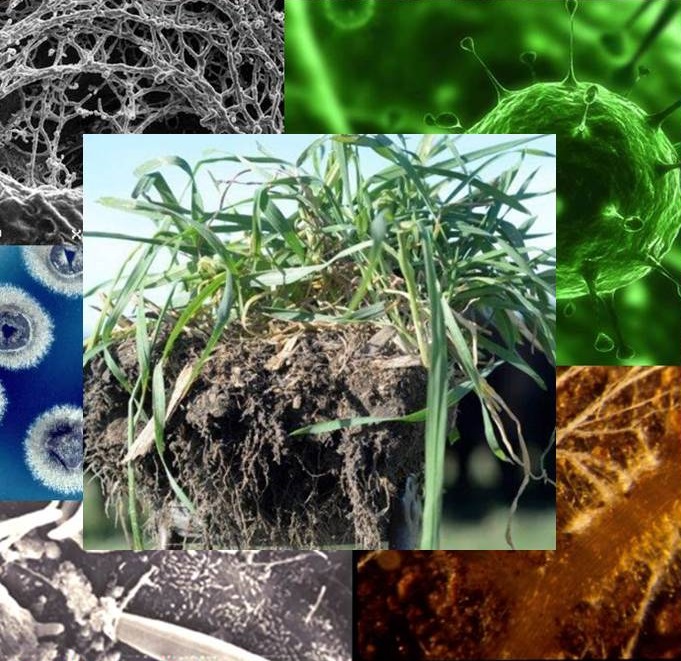Carbonomics
by Keith Berns
 There are many striking similarities between the economy of a country and the interactions that are occurring in a healthy soil. The economy of the soil is based on solar energy, but it is driven by the interactions between the soil, the plants, and the soil biology.
There are many striking similarities between the economy of a country and the interactions that are occurring in a healthy soil. The economy of the soil is based on solar energy, but it is driven by the interactions between the soil, the plants, and the soil biology.
Supply and Demand is the first principle of economics and any economy must have both producers and consumers. Plants produce carbon through photosynthesis and also provide protective services for the soil. The soil provides mineral nutrients, habitat for roots and biology, and water storage. The biology provides nutrients through fixation and cycling as well as protective services. When we eliminate the biology from our agricultural systems through excessive and continued use of chemical, fertility, and crop protection inputs, we essentially place our plants on welfare as we are externally providing the system what the system could and should provide for itself.
Currency is needed for quick and efficient transaction to occur between producers and consumers. Carbon is the perfect currency in the soil economy as it can be produced (photosynthesis), spent (root exudates), stored (organic matter), and is desired by all. Carbon, like any good currency, also has multiple forms (gas, liquid, and solid) and can transform very easily from one to another. Utilizing cover crops whenever possible will help you to increase your cash flow of carbon currency for maximum production.
 Capital is accumulated (stored or saved) currency and is needed for growth and stability of any economy. Stored carbon currency is held in the soil as organic matter and is one of the most important indicators of a healthy soil. High organic matter soils, like capital rich economies, are very productive, stable, resilient, and efficient. Soil organic matter cannot be increased without having excess carbon in the soil and cover crops are one of the best ways to increase soil carbon.
Capital is accumulated (stored or saved) currency and is needed for growth and stability of any economy. Stored carbon currency is held in the soil as organic matter and is one of the most important indicators of a healthy soil. High organic matter soils, like capital rich economies, are very productive, stable, resilient, and efficient. Soil organic matter cannot be increased without having excess carbon in the soil and cover crops are one of the best ways to increase soil carbon.
Energy and Resources drive and power every economy. Soil economies are all solar powered and as farmers we need to plant seeds and grow our own solar collectors. Resources for our economy include carbon (free from photosynthesis), nitrogen (free from biological fixation), and other soil minerals which are “mined” by the soil biology and “sold” to the plant in exchange for carbon. Promoting soil biology is like hiring trillions of tiny workers to mine, manufacture, transport, and deliver plant needed resources.
Infrastructures, like transportation and communication, are critical for growing an economy. Mycorrhizal fungi, earthworms, and other soil biology are the primary transportation mechanisms in the soil. Sophisticated communication also occurs at multiple levels between plants and soil biology.
Defense and Protection are provided to the system through soil armor (cover), plant signaling, symbiotic relationships, and biological diversity.